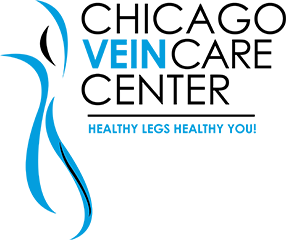Many people believe that the only option for getting vein disease treatment involves surgery. This was true just over a decade ago at a time when so-called ‘vein stripping’ was the method used to surgically rip out affected veins. This surgery involved a hospital stay, general anesthesia, and an extended recovery time, whether the goal was to resolve debilitating circulation issues or to reduce the appearance of minor vein abnormalities such as varicose veins. Luckily, surgery isn’t your only option today, and in many cases such as mild varicose veins, medical intervention might not be necessary at all.
‘Invasive,’ ‘minimally invasive’ and ‘non-invasive’ refers to how much the doctor must go into the body in order to treat the problem vein or veins. Each order of invasiveness carries its own set of pros and cons, but all of them carry the same goal—to improve your vein health. Keep reading to learn more about the various types of treatment a typical Chicago vascular doctor uses to help treat varying degrees of vein disease.
What do Chicago vein experts mean by ‘invasive,’ ‘minimally invasive’ & ‘non-invasive’ medical procedures?
‘Invasive’ medical procedures are those that require the most access to your inner body in order to treat your condition. Invasive vein treatment usually harkens back to vein ligation and stripping, which is performed in a hospital and usually under a heavy local or general anesthesia. A heavy anesthetic must be used because this is considered a minor surgery, involving an incision either below the affected vein or in the groin. Then, a wire is inserted into the vein to cut out the problem area, followed by the physician tying off the remainder of the vein.
While vein stripping still has its uses in extreme cases, specially tuned lasers, catheter-based procedures, and other modern medical advances are taking its place as the go-to method for spider and varicose vein treatment in Chicago. These types of procedures are called ‘minimally invasive’ because, although still considered surgery, they do not require as much access to the treatment area as more invasive procedures. There are numerous options for minimally invasive treatments such as sclerotherapy and endovenous ablation therapy. Each serves a specific purpose with numerous advantages over invasive techniques.
Minimally invasive treatments can be completed in about an hour and require no long recovery periods, because you can walk into our office and then literally walk out afterwards, free to return to your home or work in most cases after your varicose veins have been removed. Over the next few weeks, their last traces disappear from the surface of your skin, and your legs begin to regain their original beauty. Even better, the side effects of the varicose veins such as tiredness, swollen legs and ankles and constant feelings of weakness also improve often immediately following your procedure.
If you haven’t deduced already, ‘non-invasive’ procedures are not invasive and refer to those treatments that do not penetrate the skin. Non-invasive vein treatments typically entail at-home therapies that work to improve circulation in the legs and feet. Common methods include wearing compression stockings to massage the leg veins, elevating the legs above heart level to reduce swelling, and performing doctor-approved exercise to strengthen the vein valves.
Although non-invasive treatments can be effective at making you feel better, they aren’t going to make the vein go away. These techniques are usually for people with bearable symptoms and those who don’t need or want surgery.
Which type of treatment is best?
After meeting with Dr. Ramon Castro and undergoing a couple of painless examinations at our comfortable Chicago vein treatment center, he will have a better understanding of your condition and will be able to recommend the right type of procedure for you. If you’d like to schedule a consultation with Dr. Castro, please call us at 773-283-7887. No matter if you want to undergo a surgical procedure or try conservative methods, we can help.

